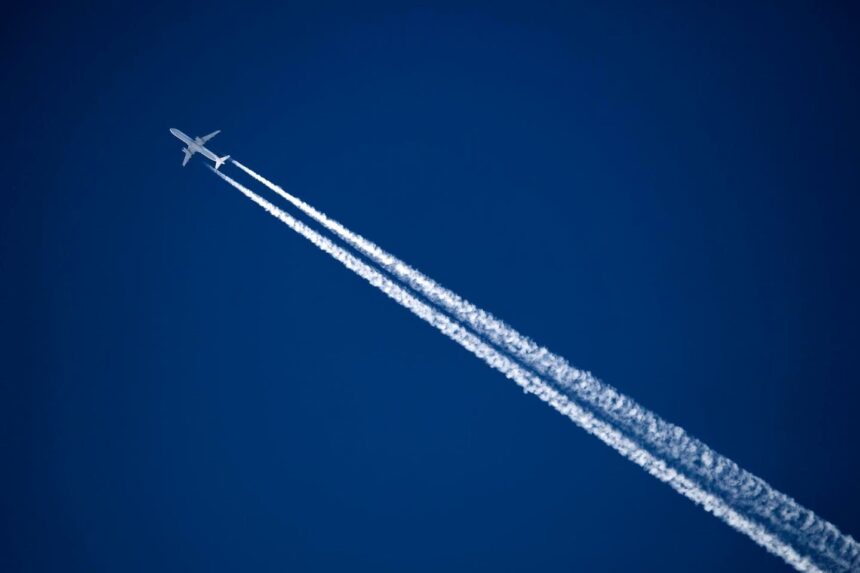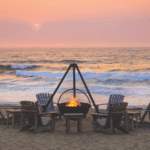In part one of this series, I discussed what I’ve observed of climate change over 50 years of world travel. In part two, I wrote about how travel changes affect us now. In this post, we’ll focus on flying and the role it plays in the climate crisis. When we travel, vast amounts of carbon emissions are generated throughout our trips. According to the World Travel & Tourism Council, the tourism sector creates around a tenth of the greenhouse gas emissions that drive climate change. Other studies agree that nearly half of all transport emissions stem from global tourism.
Planes use vast amounts of fossil fuels, with flying responsible for about 2.5% of global CO2 emissions—a number that is on the rise. Burning fossil fuel not only releases CO2 but also has strong warming non-CO2 effects due to nitrogen oxides (NOx), vapor trails, and cloud formation triggered by the high altitude at which aircraft operate.
What Travelers Can Do About Climate Change
So, what can travelers—both as an industry and as individuals—do about this problem? Here are some suggestions:
- Direct, non-stop flights are best. Medium- and long-haul flights account for 73% of aviation’s carbon emissions. However, short-haul flights emit 251 grams per kilometer (.62 miles), while long-haul flights emit 195 grams per kilometer. The disparity is due to the high fuel consumption during takeoff and landing, which makes the level flight segment cleaner regardless of distance.
- Reduce flying and increase eco-efficiency. To reduce its impact, France has banned domestic flights where the same trip can be completed in less than two-and-a-half hours by train. Austria has passed similar legislation. It’s a start, but so far these policies impact a small number of flights. In the aviation sector, finding shorter haul markets is desirable; even a 10% reduction in emissions is a welcome achievement for destinations. Tour operators might also change the destinations they offer, particularly to travelers generally focused on booking any “sun and sea” experience rather than a specific place. “There’s a lot that needs to be done to build pathways to zero,” says Dan Rutherford, program director for the International Council on Clean Transportation (ICCT), whose own research focuses on improving the efficiency of planes.
That and other forms of demand reduction, such as carbon pricing, a frequent flyer levy, and the rollout of biofuels, could reduce aviation’s footprint by 85% by 2050, according to the ICCT. “We’re going to require all of the above,” says Rutherford.
Individual Actions To Combat Climate Change
And what can individual travelers do? Small choices can make a significant difference, and there are many to be made.
- Fly mindfully. Check out these suggestions, each of which, if multiplied by others, can help subdue climate change: Choose airlines that offer carbon offset programs. Donate to carbon offset organizations yourself. Choose eco-friendly airlines. Sit in economy class. Take nonstop flights to limit layovers. Fly on mid-size passenger planes. Take daytime flights for minor environmental benefits. And if you’re traveling 200 miles or less, look for alternative travel modes.
- Adapt to rail and bus for longer journeys. While a flight would emit around 109 pounds of CO2 per passenger on a 200-mile trip, that same trip on a train or charter bus would emit just 26 and 19 pounds of CO2 per passenger, respectively.
Europeans are leading the way. “The rail system in Europe is incredibly accessible, with quick, comfortable and affordable trains,” says sustainable travel writer Holly Tuppen, author of Sustainable Travel: The Essential Guide to Positive Impact Adventures. Rail travel is also the least carbon-intensive type of motorized transport. A train from London to Paris emits 91% less CO2 than flying. “Coach travel is also great for reducing carbon emissions,” adds Tuppen, “and can be much more affordable than trains.”
Europe’s night train revival is a growing travel trend. New nocturnal routes have launched, including a Brussels to Berlin sleeper. Major holiday and tour operator TUI, for instance, began offering new sleeper train trips as a substitute for six short-haul routes in Europe. Tour operator Sunweb, in the Netherlands, is also focused on offering overnight train trips to Belgium and the French Alps, and to the south of France.
“With the advance of the sleeper train, you can save on a night at a hotel and actually travel a very long way past changing landscapes, awaking to breakfast in the Alps, for example,” says Jones.
Credit: Forbes.com








